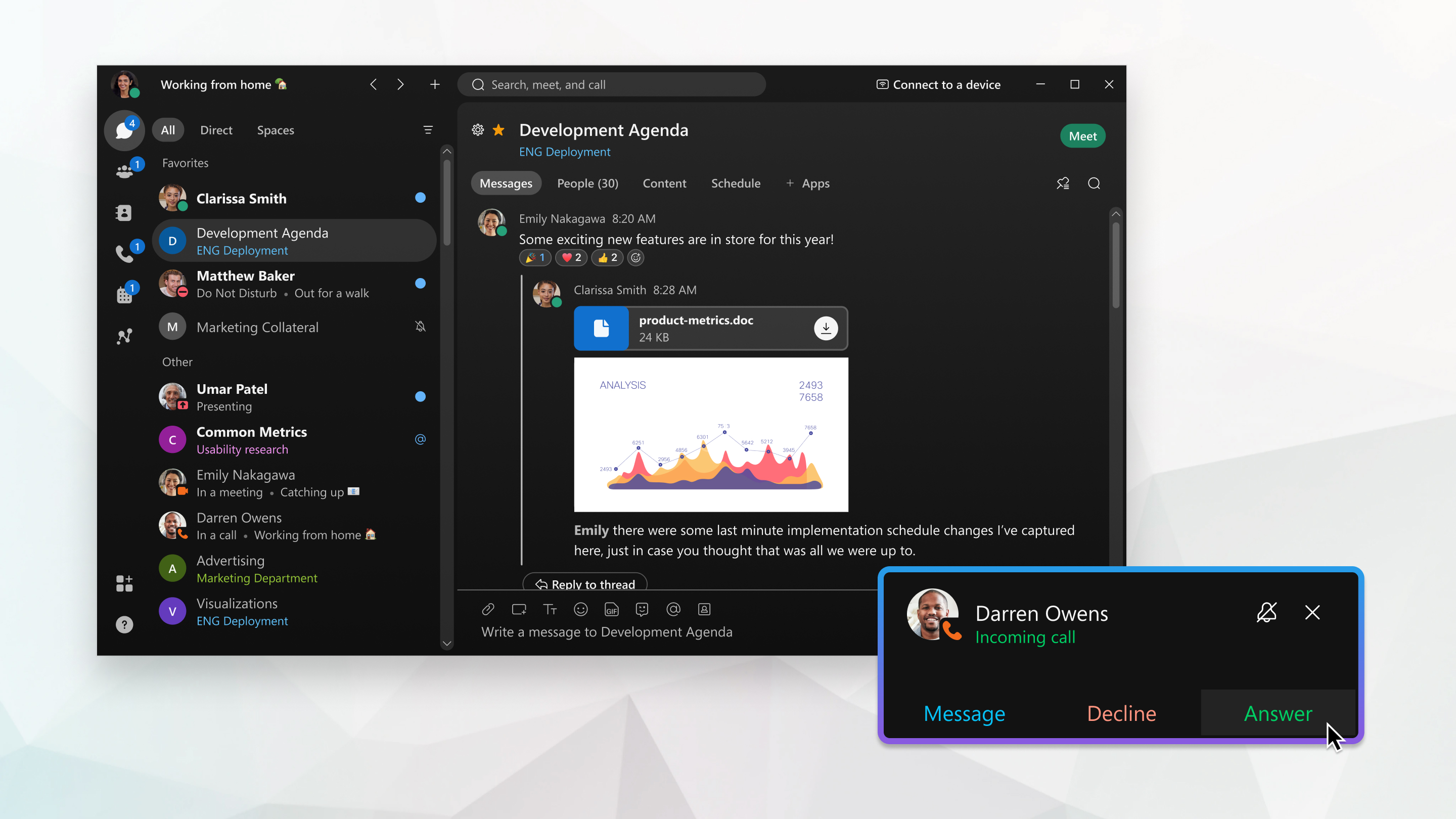Webex App | Answer a call
 Feedback?
Feedback?
Caller ID
Webex App searches for the caller ID of an incoming call from various contact sources in the following order:
- Your company directory in Webex Common Identity (CI).
- Organization contacts added by your administrator, and personal contacts in your Contacts tab.
- Local OS contacts: Outlook, Mac contacts, Android contacts, and iPhone contacts.
You'll see the caller ID in the incoming call notification, call history, and voicemail, if you have voicemail set up.
If there's no match found with the incoming phone number, then Webex App uses the display name in the Session Initiation Protocol (SIP) INVITE header if available. Otherwise, it uses the username part of the SIP Uniform Resource Identifier (URI) from the SIP FROM header.
When a call is forwarded or redirected, Webex App shows information on the caller, and where it was forwarded or redirected from. This includes calls forwarded or redirected from hunt groups, call center queues, and executive assistants.
If you're set up with Webex Calling or your calling is hosted by a service provider, and you decline a call on one device, the call may continue to ring on your other devices. The call will eventually be sent to your voicemail, if you have voicemail set up.
|
When you get an incoming call notification, choose the option that best suits you at the time:
If you're connected to a Cisco headset, you can also answer or decline the call from the headset. For more information, see Make and Answer Calls using the Cisco Headset 730 or Use Your Cisco Headset 500 Series. If you're set up with Unified CM and you answer the call on your desk phone with video support, you can see the person's screen share on your phone. If your phone doesn't support video, you can see the shared screen on your desktop app. |
| 1 |
Tap Accept when you’re ready to answer the call or Decline if you're not. |
| 2 |
If your device is locked, swipe right from the lock screen to answer the call. If you're in China, tap the incoming call notification and unlock your screen. Then, you can see who's calling you. Tap Accept to answer the call. |
| 3 |
When you answer a call, your earpiece is used for audio. To switch to your speaker, tap To answer every call using your speaker, tap your
profile
picture, select and then turn on Answer calls with speaker
on. |
When you answer a Webex App call, you have the option of answering the call with video or with audio only. If your screen is locked, unlock the screen before you answer the call.
|
Tap
When you answer a call, your earpiece is used for audio. To switch to your speaker,
tap If you want to answer every call using your speaker, tap your profile picture, select , and then turn on Answer calls with speaker on. |
|
Click |

 and then make your selection.
and then make your selection. to answer the call with video.
to answer the call with video.


